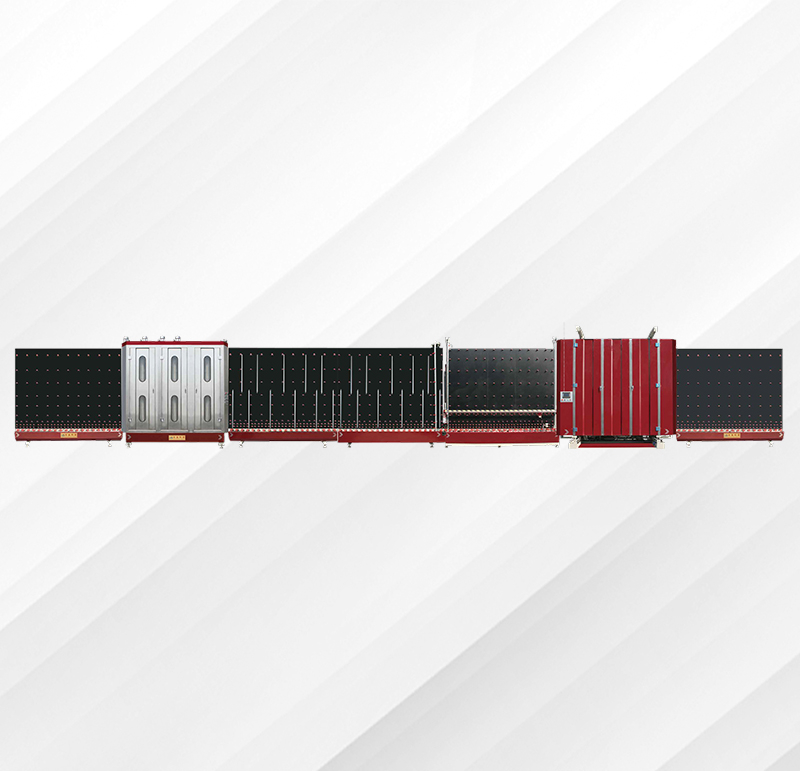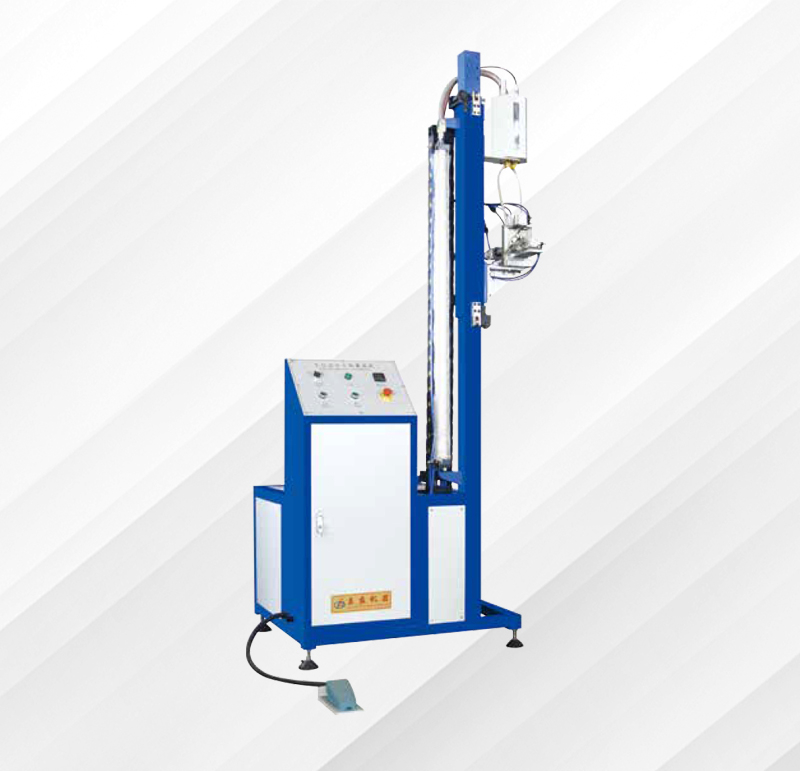
中空玻璃加工設備?故障分析流程
時間:2025-11-14 來源:http://www.ttkjhz.net/ 發布人:昌盛機械
中空玻璃加工設備故障分析流程
Fault analysis process for insulated glass equipment
在進行故障分析時,應遵循一定的程序這種程序大致如下:
When conducting fault analysis, a certain procedure should be followed, which is roughly as follows:
1在保持現場的情況下進行癥狀分析
1. Conduct symptom analysis while maintaining the scene
(1) 詢問操作人員:發生了什么故障?在什么情況下、什么時間發生的?設備運行了多久?故障發生前有何異常現象(如有何聲響、報警信號、煙氣、異味)有無錯誤操作?控制系統操作是否正常?操作程序有無變動?有操作時有否特殊困難或異常?
(1) Ask the operator: What malfunction has occurred? Under what circumstances and at what time did it occur? How long has the device been running? Are there any abnormal phenomena (such as sounds, alarm signals, smoke, odors) or incorrect operations before the fault occurs? Is the control system operating normally? Is there any change in the operating procedure? Are there any special difficulties or abnormalities during the operation?
(2) 觀察(包括整機概況,各項運行參數) 觀察有無明顯的異常現象?零件有卡阻或損傷?各種管線是否松動或泄露?電纜(線)有無破裂、擦傷或燒毀?設備運行參數有何變化?有無明顯的損壞信號?
(2) Observe (including the overall situation of the machine and various operating parameters) to see if there are any obvious abnormal phenomena? Are the parts stuck or damaged? Are various pipelines loose or leaking? Is the cable (wire) broken, scratched, or burned? What changes have occurred in the operating parameters of the equipment? Are there any obvious signs of damage?
(3) 檢查檢測指數裝置 檢查所有讀數是否正常,包括壓力或儀表讀數等。檢查過濾器、報警器及聯鎖裝置、打印輸出或顯示器是否正常。
(3) Check the detection index device to ensure all readings are normal, including pressure or instrument readings. Check if the filters, alarms, interlocking devices, printouts, or displays are functioning properly.
(4) 點動設備檢查(在條件允許的情況下) 檢查間歇情況、持久情況、快或慢時的情況,這些情況是否有代表性和再現性,是否影響輸出,能否引起損壞或其他危險。
(4) Jogging equipment inspection (if conditions permit) checks for intermittent, persistent, fast or slow conditions, whether these conditions are representative and reproducible, whether they affect output, and whether they can cause damage or other hazards.
2、檢查設備(包括零件、部件、系統線路檢查)
2. Check equipment (including inspection of parts, components, and system circuits)
(1) 利用五官進行檢查(繼續深入觀察的過程) 摸:設備的振動元(組)件的熱度(要注意安全!盡量用手背)。 聽:有無異常聲響。 嗅:有無焦味及其他異味; 查:工件的開關與位置變化、設備性能參數的變化、線路異常檢查。 進行線路檢查時,應在明確系統原理,熟悉系統接線及安裝街具體情況下進行。 進行線路檢查時,應在明確系統原理,熟悉系統接線及安裝街具體情況下進行。
(1) Using facial features for examination (continuing the process of in-depth observation), touch the temperature of the vibrating elements (components) of the equipment (pay attention to safety! Try to use the back of your hand as much as possible). Listen: Is there any abnormal sound. Smell: Check for burnt or other unusual odors; Check: changes in the switch and position of the workpiece, changes in equipment performance parameters, and inspection of circuit abnormalities. When conducting line inspections, it is necessary to clarify the system principle, familiarize oneself with the system wiring and installation details before proceeding. When conducting line inspections, it is necessary to clarify the system principle, familiarize oneself with the system wiring and installation details before proceeding.
(2) 評定檢查結果 評定故障判斷是否正確,故障線索是否找到,各項檢查結果是否一致。
(2) Evaluate the inspection results to determine whether the fault diagnosis is correct, whether the fault clues have been found, and whether the inspection results are consistent.
3、故障位置的確定
3. Determination of fault location
(1) 確定系統結構及測試方法 在熟悉設備說明書并了解設備基本原理后,確定設備故障所在,并明確用什么方法測試,需要什么手測試手段,可能獲得什么樣的測試參數或性能參數,在什么操作條件下進行,必須遵守哪些安全措施等。
(1) After familiarizing oneself with the equipment manual and understanding the basic principles of the equipment, determine the system structure and testing methods, identify the location of equipment faults, and clarify what methods to use for testing, what manual testing methods are required, what testing parameters or performance parameters may be obtained, under what operating conditions, and what safety measures must be followed.
(2) 系統檢測 根據前面的分析,采用為合適的測量方法,選擇合適的測量點,根據輸入或反饋所得結果與正常值或性能標準進行,確定可疑位置。 系統檢測的方法很多,如直接比較法(與無故障的設備對比)、分步隔離法(逐步縮小檢查范圍)、變換條件法(用于故障現象不明顯時)、試探反證法,檢測量法,試切試樣法等。
(2) System detection is based on the previous analysis, using appropriate measurement methods, selecting appropriate measurement points, and determining suspicious locations based on input or feedback results compared to normal values or performance standards. There are many methods for system detection, such as direct comparison method (compared with equipment without faults), step-by-step isolation method (gradually narrowing the inspection scope), transformation condition method (used when the fault phenomenon is not obvious), trial and error method, detection quantity method, trial cutting sample method, etc.
1、修理或更換
1. Repair or replace
(1)修理:查找故障原因,修復并采取預防措施;檢查相關零件,防止故障擴散。
(1) Repair: Identify the cause of the malfunction, repair and take preventive measures; Check the relevant parts to prevent the spread of faults.
(2) 更換:正確裝配調試更換零件,并注意相關件。
(2) Replacement: Correctly assemble, debug, and replace parts, and pay attention to relevant parts.
5、進行性能測定
5. Conduct performance testing
(1) 啟動設備,調試裝配后,先手動(或點動)運行,再自動(或連續)運行,先空載運行再負載運行測定。
(1) Start the equipment, debug and assemble it, run it manually (or jog) first, then automatically (or continuously), run it without load first, and then test it under load.
(2) 調節負載變化,速度由低到高,負荷由小到大進行測試。
(2) Adjust load changes, test from low to high speed and from small to large load.
(3) 擴大性能試驗范圍,根據需要由局部到系統逐步擴大性能測試范圍,注意非故障區系統運行狀況。如性能滿足要求則交付使用,如不能滿足則重新確定故障部位。
(3) Expand the scope of performance testing, gradually expanding the scope of performance testing from local to system as needed, and paying attention to the operation status of non fault area systems. If the performance meets the requirements, it will be delivered for use. If it cannot be met, the fault location will be re determined.
本文由 中空玻璃加工設備 友情奉獻.更多有關的知識請點擊 http://www.ttkjhz.net/ 真誠的態度.為您提供為全面的服務.更多有關的知識我們將會陸續向大家奉獻.敬請期待.
This article is a friendly contribution from insulating glass processing equipment For more related knowledge, please click http://www.ttkjhz.net/ Sincere attitude To provide you with comprehensive services We will gradually contribute more relevant knowledge to everyone Coming soon.
- 全自動封膠線中中板壓與棍壓的區別 2025/11/15
- 中空玻璃加工設備?故障分析流程 2025/11/14
- 中空玻璃生產線:中空玻璃生產流程及所需要設備 2025/11/13
- 丁基膠涂布機液壓油的選擇指南 2025/10/31
- 玻璃涂布機設備操作流程 2025/10/30
- 雙組份打膠機比例怎么調 2025/10/29
- 全自動鋁條折彎機折彎角度偏差的解決方法 2025/10/29
- 中空玻璃丁基膠涂布機漏油怎么解決 2025/10/28
- 臥式丁基膠涂布機糾偏原理 2025/10/27
- 立式丁基膠涂布機故障維修 2025/10/25
 聯系我們Contact us
聯系我們Contact us
- 咨詢熱線:0531-85717458 13705446998
- 公司地址: 山東省德州市齊河安頭鄉企巢工業園
- 掃碼聯系我們:


 當前位置:
當前位置:



 產品分類Product categories
產品分類Product categories
